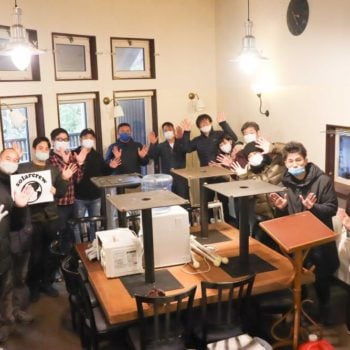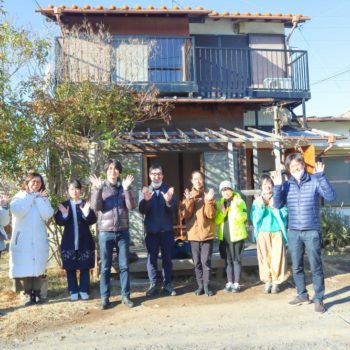![How SDGs Kanazawa Living Lab realize the circular economy for food [Experience Report]](https://circular.yokohama/wp-content/uploads/2021/05/ceps-fieldwork1.jpg)
How SDGs Kanazawa Living Lab realize the circular economy for food [Experience Report]
- On 2021/6/16
On Saturday, January 16 2021, we visited Hakkei Ichiba (Hakkei Market) and Nagashima Farm run by SDGs Kanazawa Living Lab, which mainly focuses on engaging in circular agriculture.
The topic of the event was “food and the circular economy” Mr. Kentaro Hirano, the chief of Hakkei Ichiba, Mrs. Natsumi Okui, the representative of Hamandarina LLC, and Mr. Taichiro Nagashima, the representative of Nagashima Farm coordinated the event. We learned how to create the circular community through the food industry and enjoyed shiitake mushroom gathering afterwards.
*This event is part of Circular Economy Plus School, which is organized by Circular Yokohama in collaboration with the YOKOHAMA Living Lab Support Office and the NPO Yokohama Community Design Lab.
SDGs Kanazawa Living Lab
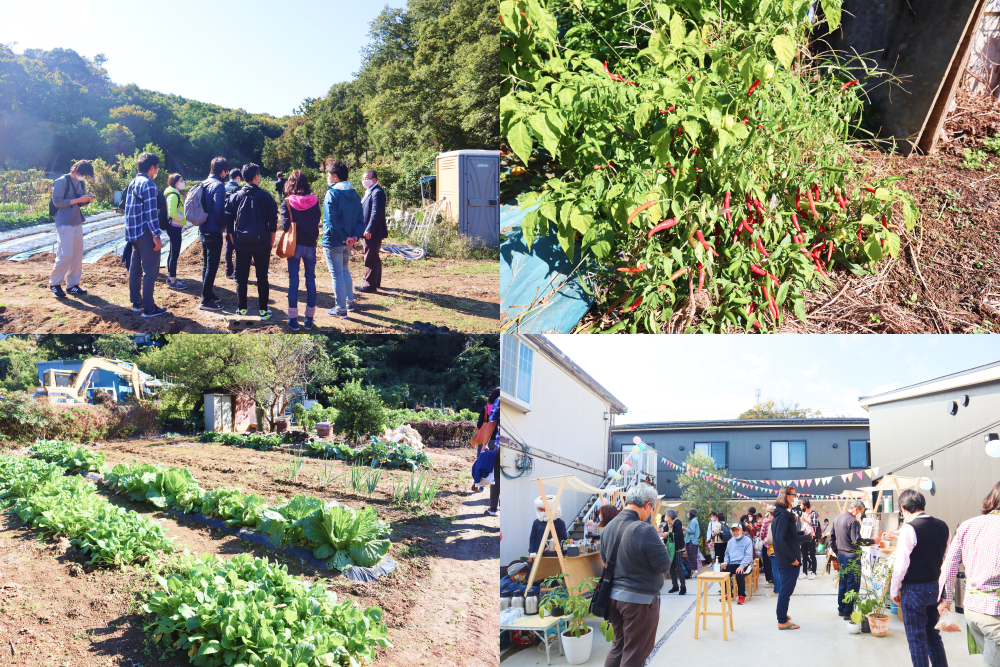
When you think of Yokohama, the modern cityscape of the Sakuragi-cho and Minato Mirai areas may come to your mind. However, Yokohama City has more than 3,000 hectares of farmland, which accounts for about 7% of the total area of the city. A lot of varieties of vegetables and fruits are grown in this area despite the fact that Yokohama is one of the largest cities with a large population in Japan.
Realizing food circulation within the local community and promoting local production for local consumption has various benefits, such as lowering CO2 emissions by reducing food mileage, improving the health of citizens by consuming healthy and fresh food, and revitalizing the local economy.
This fieldwork began at Hakkei Market, which is the base of the “SDGs Yokohama Kanazawa Living Lab,” a group of local businesses, citizens, and teachers in Kanazawa Ward. They are working on projects related to food and community building, and taking advantage of the strengths of the area. First, Kentaro Hirano, the food coordinator and the chief of Hakkei Ichiba, introduced the unique point of the area.
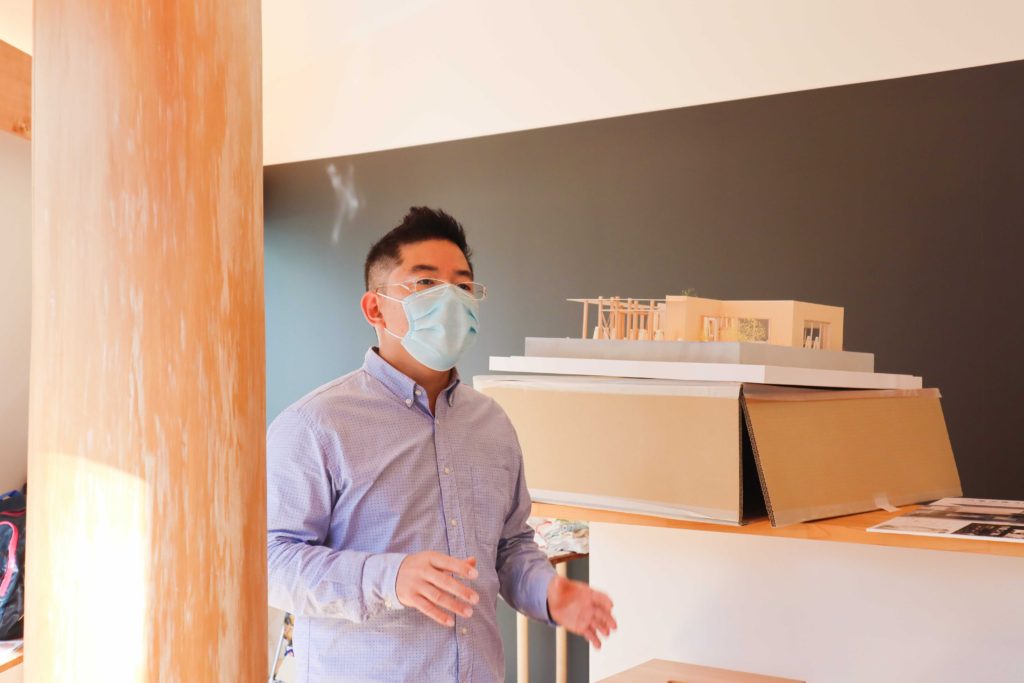
Hakkei Ichiba is what we call “a concept apartment” that aims to expand the variety of living. It is located a 10-minute walk from Kanazawa-Bunko Station. This event was held at “Kozumi no Hotori” in the apartment area. It is an open space with a kitchen attached so as to create new connections with the residents and the local people.
Mr. Hirano proposed a new lifestyle at Hakkei Ichiba with the theme “A place for ‘communication’ through food.”
Mr. Hirano was born and raised in Kanazawa Ward. He has been involved in various urban development projects all over Japan through volunteer activities since he was in college. Mr. Hirano told us that he felt the need to make “living” more exciting in Kanazawa Ward because this area used to be the only ward in Yokohama City where the population was declining, and the number of vacant houses for single people was increasing at the same time.
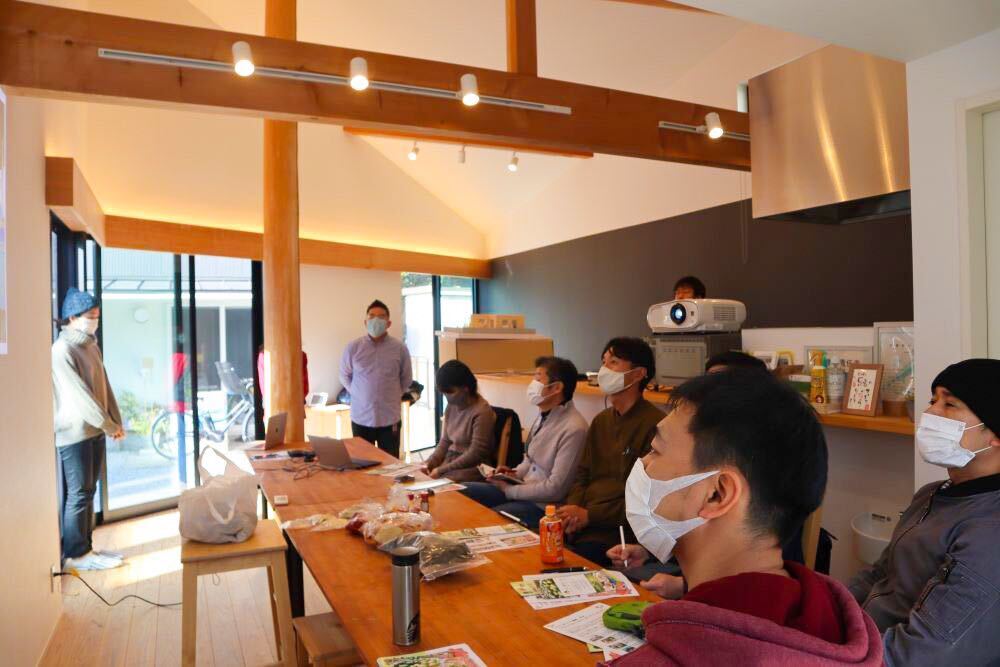
Mr. Hirano showed us the pictures of the first event called ENJOY LOCAL!, collaborated with Yokohama Living Lab held in November 2020. Also, Mr. Hirano and the residents of Hakkei Ichiba are lately working on a new DIY project called “Hakkei Ichiba ANNEX!” which aims to remodel a vacant house into a shared house. He explained to us that they are remodelling a vacant house into a shared house and it will be available for students and a common lounge for the community in the near future.
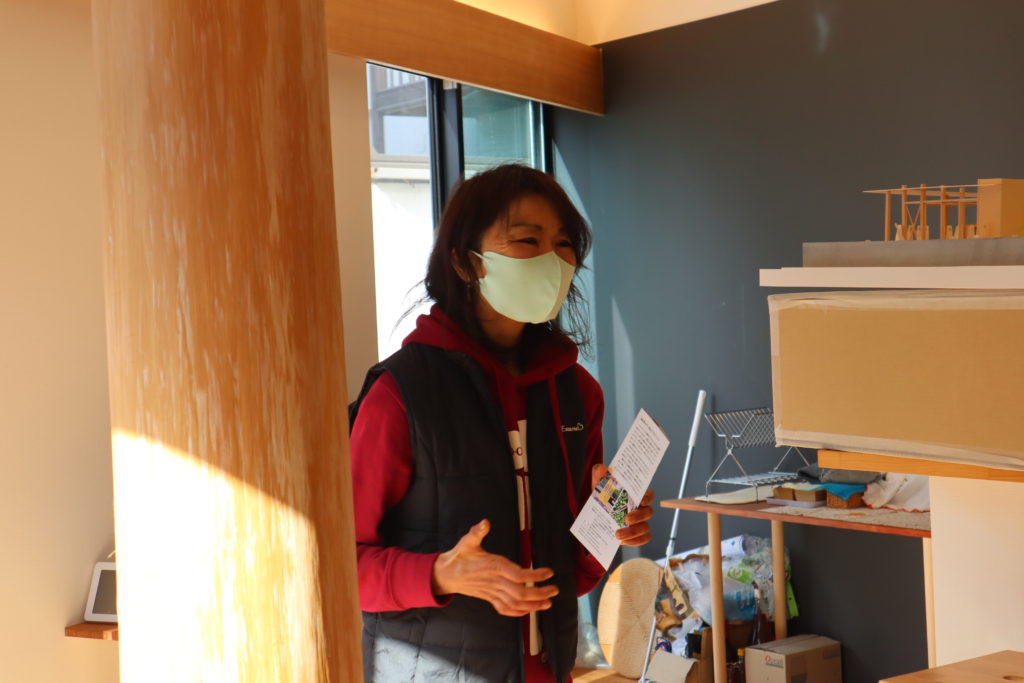
The next speaker, Mrs. Okui, the representative of Hamandarina, explained the concept behind her project “From waste to Delicious!.” Hamandarina promotes local consumption and food waste recycling, and produces a various range of products. She told us the history of one of her products which is made from green oranges in Kanazawa Ward.
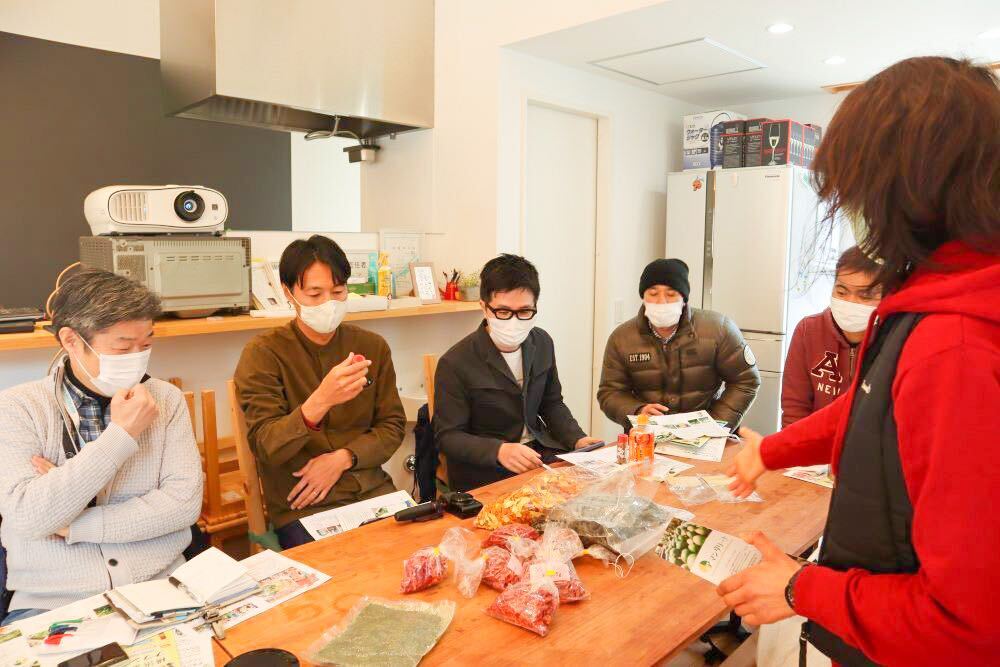
Another product representing her project is “Kanazawa Hachimi.” It is a spice mixture made out of eight ingredients such as chili peppers, shiso, shiitake mushrooms, kombu, sansho peppers, ginger, black sesame, and green laver (called aosa.)”
Kanazawa Hachimi is a circular project that up-cycles waste eelgrass (a seaweed that grows under the sea) to compost soil. The compost soil provides nutrients to chili peppers and other vegetables at local farms and elementary schools. This process is not only creating the food production circular, but also creating the interaction within the local community.
The uniqueness of Kanazawa Hachimi is that those ingredients encourage the local consumption, and the most valuable points that many local citizens are engaged in this project. The whole process of producing Kanazawa hachimi is exactly what we define as a circular economy of food, Mrs. Okui said.
Nagashima Farm
Next, we visited Nagashima Farm. Nagashima Farm is a shiitake mushroom farm that is located about 10 minute-walk away from Hakkei Ichiba.
Mr. Nagashima, the representative of the farm, shared with us the story why he started growing shiitake mushrooms and an effective use of non-standard shiitake mushrooms for agricultural cooperation with other fields such as social welfare. We learned that shiitake mushrooms help increase the circular economy. At Nagashima farm, sawdust, rice bran, corn cores, and other by-products are used for mushroom beds. After using them to grow mushrooms, they are used as compost in the fields.
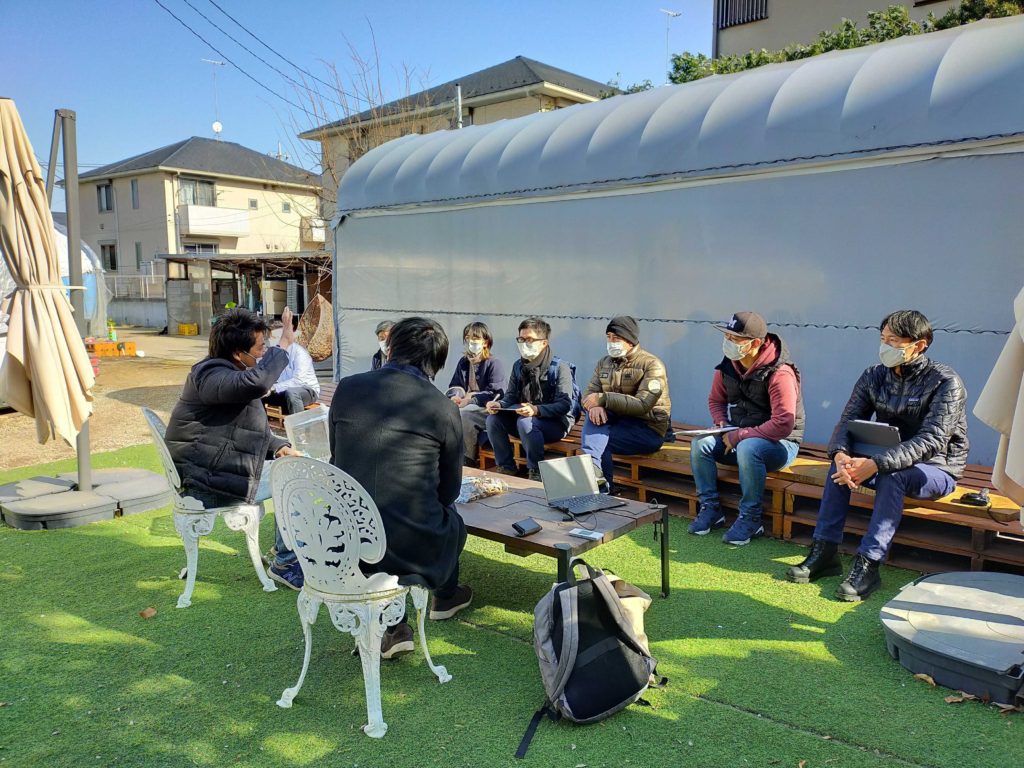
Covid-19 got Nagashima farm to start a new project. Since people had to stay home, Mr. Nagashima thought of an idea that both children and adults could enjoy so that he could help people stay positive. His idea was to start selling a shiitake mushroom cultivation kit and share it on social media.
What Mr. Nagashima is doing in terms of the circular economy is not only growing shiitake mushrooms. In the fall of 2020, Mr. Nagashima crowdfunded and installed solar power generation equipment to the farm. The close relationship with the local farmers and residents made his crowdfunding to success, Mr. Nagashima said.
After talking to Mr. Nagashima, we did a shiitake mushroom gathering. Mr. Nagashima introduced some tips on how to pick good shiitake mushrooms and how to cook them properly.
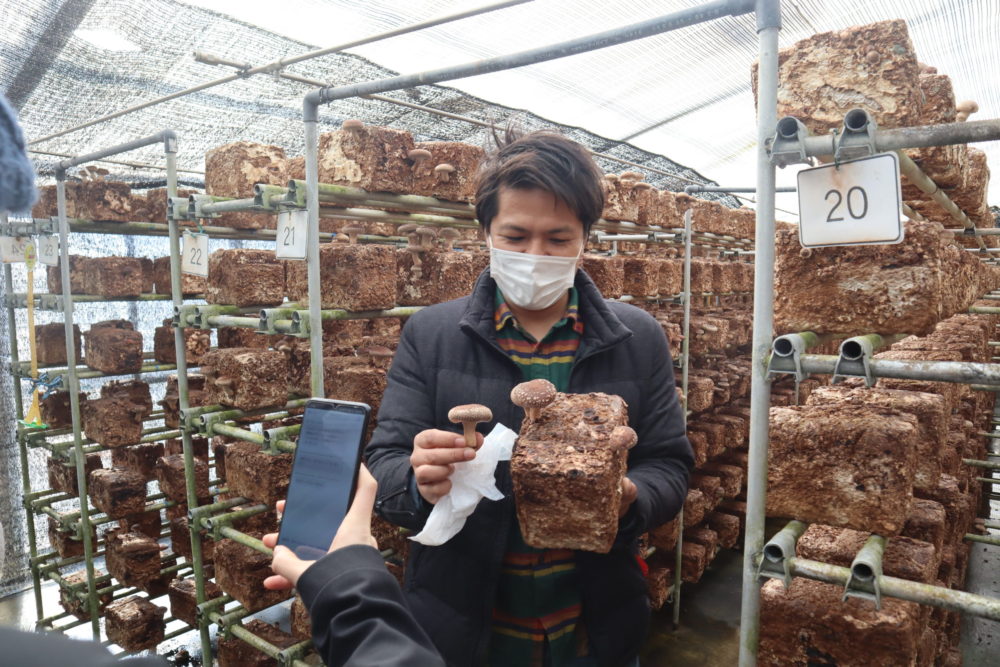

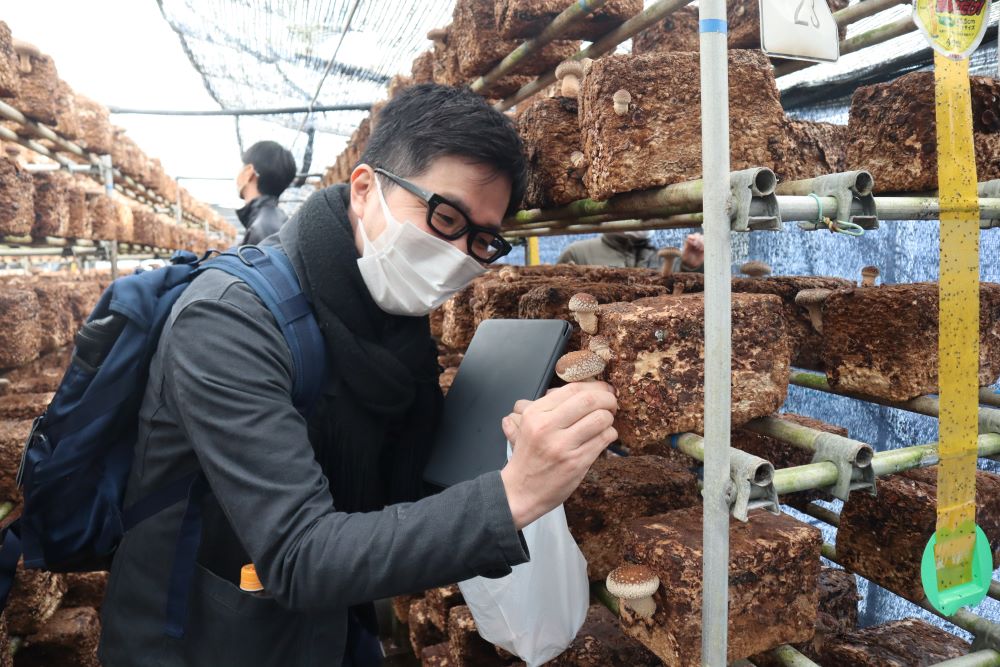
Each participant ended up with a bag full of shiitake mushrooms. We hope that everyone who participated in the fieldwork enjoyed learning about the circular economy through Nagashima farm’s shiitake mushroom project.
Editor’s Note
From the perspective of the circular economy, the key to solving local issues is to increase the number of “creators ” in the community. Creating a place where everyone can become a “creator” and connect with others. SDGs Kanazawa Living Lab, is a great example which creates opportunities for people to participate in city development, and makes them aware of local issues of their own area.
There are still many hidden assets in the Kanazawa area. Although Covid-19 continues to make it difficult to hold events with a large number of people, they want to have an opportunity to connect and interact with others. For this reason, it is important to construct a strong local community relationship.
These days, there are many initiatives that are involved in the local food circulation, such as direct sales of locally grown vegetables and restaurants that support local consumption. Why don’t you take a look at the type of crops grown in your area and how they are consumed? You may discover new connections with the food around you.
[Reference]Hakkei Ichiba
[Reference]Hamandarina
[Reference]Nagashima Farm
Circular Yokohama Editorial Team
Latest posts by Circular Yokohama Editorial Team (see all)
- YOKOHAMA CIRCULAR FASHION GATHERING: Envisioning the future of textile circulation across industries [EVENT REPORT] - 2025/12/9
- Harch Inc. is Holding the Release Event for “Sustainable City Guide: TOKYO – Connect with brands and enjoy upcycling! - 2024/8/7
- Basic and collaboration agreements finalized for Yokohama SDGs Design Center Project - 2024/6/21


![Think about the future of Yokohama with Donut Economics [Experience Report]](https://circular.yokohama/wp-content/uploads/2021/06/Image-from-iOS-64-300x235.jpg)
![Can DX be a solution to the problem with plastic containers? [Experience Report]](https://circular.yokohama/wp-content/uploads/2021/05/shutterstock_525066214-300x200.jpg)
![How can we make a business more sustainable? Find out the way with haishop [Experience Report]](https://circular.yokohama/wp-content/uploads/2021/05/Image-from-iOS-48-300x200.jpg)
![What post-COVID-19 world look like? Circular Economy Plus clear up the new demands in Ryokuen [Experience Report]](https://circular.yokohama/wp-content/uploads/2021/05/FBxDJiOA-300x200.jpeg)
